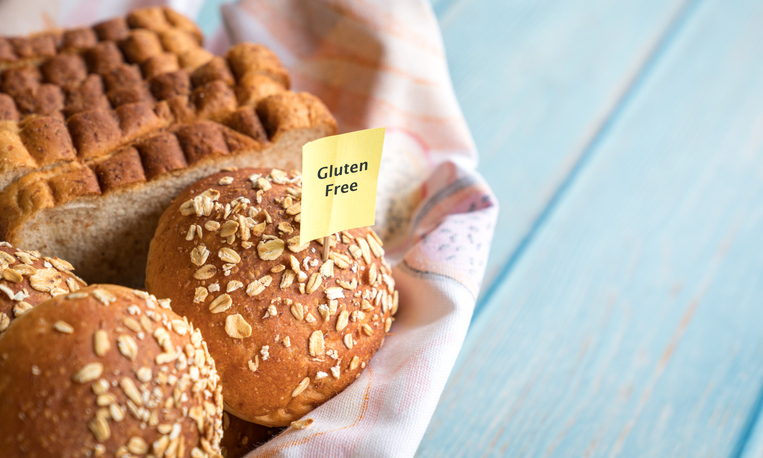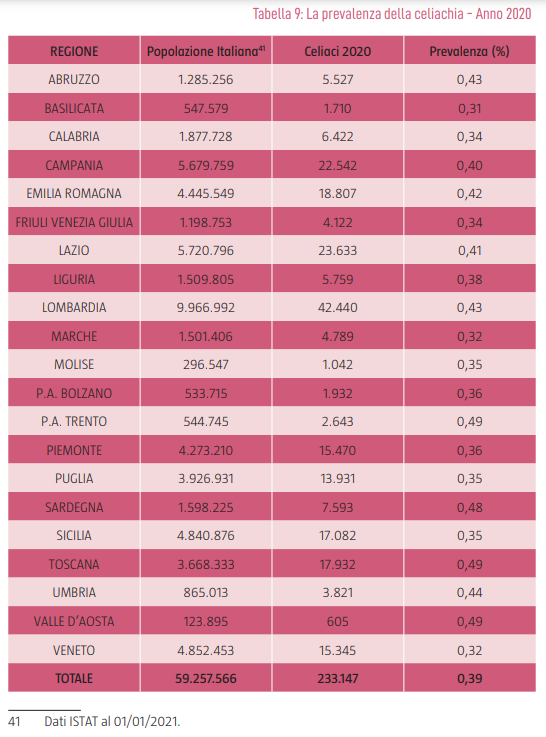Celiac disease, the map of Italian sales

Celiac disease is the most common autoimmune disease in children and primarily affects the intestines and immune system, meaning those affected are dependent on a gluten-free diet for life.
So much so that a study by the Italian Society of Pediatric Gastroenterology and Hepatology (SIGENP), carried out on 9,000 Italian children in 9 different cities, shows that in Italy about one in 60 children is affected by celiac disease, one of the highest numbers in the world , which is associated with an underdiagnosis rate of almost 60%.
Federconsumatori estimates that in Italy around 1% of the population is affected by celiac disease, i.e. around 600,000 people. But many of them still don’t know their diagnosis. In fact, the Italian Celiac Disease Association confirms that in our country only about 233,147 people are diagnosed with celiac disease and that, consequently, almost 400,000 patients do not know that they have celiac disease and the pandemic has further slowed the diagnostic process.

But while major retailers (GDO) are ready to respond to the growing demand for gluten-free products, this does not appear to be the case for commercial activities in the Ho.Re.Ca sector. (“Hotel-Restaurant-Café”, which includes all activities related to the consumption of food and drink outside the home, i.e. hotels, restaurants, catering, bars, etc.), may still be lagging behind in the offer of gluten-free products. The warning came from Director of Wall Street Italy Leopoldo Gasbarro, He was forced to visit several bars in Rome before finding the bar with gluten-free croissants where he could have breakfast in the company of his customer, who cannot tolerate the protein contained in some cereals. “In Naples, for example, it seems to me that more attention is paid to celiacs, especially in pizzerias that already display the sign “Gluten-free pizza available” on the entrance door.“, he told us and asked us to ask ourselves What are the Italian figures surrounding this pathology and what is the turnover associated with it?
The map of Italian regions with the density of gluten-free commercial activities
The map of Italian regions divided according to the presence of gluten-free commercial activities per 100 inhabitants can be consulted with this link.
As can be seen from the graphic, Umbria is at the top of the poet rankings, We manage to ensure a gluten-free structure per 19 people. Also on the podium Molise (one for every 21 people with celiac disease) and the autonomous province Trent (one for every 22), a sign that the offering is more than sufficient for the celiac community present. The first is one of the largest regions in terms of area and number of people affected by intolerance Tuscany (one of 32), Lombardy is in last place (one of 99) and is struggling to meet the high demand. Black jersey with Sardinia section, three times worse than the national average, with one gluten-free structure per 152 celiacs.
Sales of celiac disease in Italy
As far as sales are concerned, the answer always comes from the Italian Celiac Association. According to the AIC, over 10,000 tons of pasta and almost 15,000 tons of “gluten-free” bread replacement products were purchased in large-scale retail in 2022 (most recent data available). And both the quantities purchased (+4.2% and +3.6% compared to 2021) and the amounts spent (+6%) increased, also thanks to the contribution of the National Health Service, which in 2020 (latest available data) Spending over 209 million euros supports the purchase of gluten-free products and spends an average of around a thousand euros per year.
This is also why celiac disease patients are now a sought-after target for food companies, which are investing more and more in treatment world of gluten free, has seen steady growth for several years, especially in large-scale retail. In fact, gluten-free products are in demand not only among celiac disease sufferers in the true sense, but also among people who are considered “gluten sensitive” (i.e. do not suffer from celiac disease but have developed a certain sensitivity to gluten and therefore the less they consume, the better) . ) and by those who choose these products because they believe they are healthier than regular products. Therefore, although gluten-free products are notoriously more expensive, demand does not seem to be afraid of inflation.
So much so that overall The AIC estimates that in Italy the turnover of gluten-free products is 400 million euros. while moving $1.6 billion globally and expected to grow 11% by 2030 (Source: Grand View Research).
“The market is growing because the number of diagnosed cases of celiac disease is increasing, although still few compared to the 400,000 we estimate, and because products for celiac disease patients are no longer a monopoly of pharmacies but are also purchased through other distribution channels can“, explained Caterina Pilo, Director General of the AIC, who continues: “The companies are committed to diversifying raw materials, selecting high-quality ingredients and simplifying recipes. This has given gluten-free products a more balanced nutritional profile and greater organoleptic pleasantness, making them increasingly healthier, tastier and therefore more interesting“.
Properties that are also confirmed in the data: There are over 2,500 products licensed for the Spiga Sbarrata logo published by the AIC. Within a year, the supply grew by 10% and achieved over 630 million sales in supermarkets and hypermarkets. driven by the trend towards soft bread, snack cereal and cold cuts.





